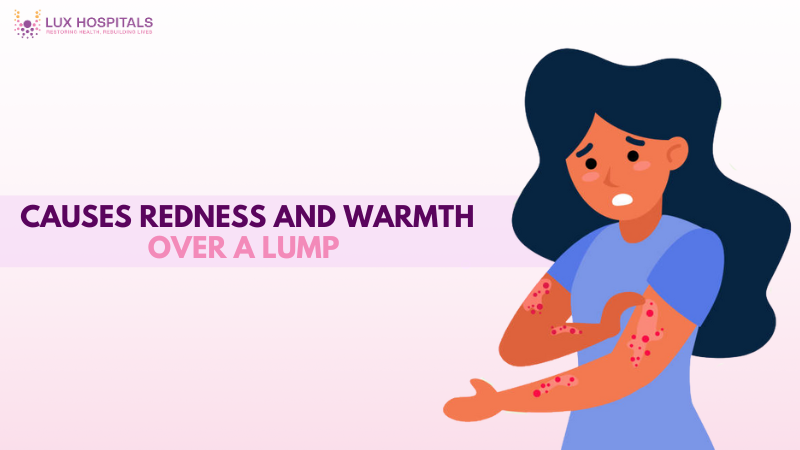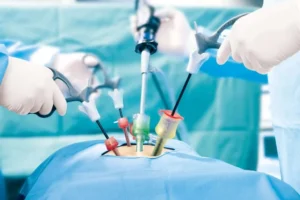Lump Under Skin? 10 Signs It Might Be Something Serious

Lumps under the skin are a common concern, from minor ailments to more serious ones. They may feel pleasant or painful, rigid or pliable, or both. Knowing the causes of subcutaneous lumps can help direct prompt medical care and reduce anxiety. The cause of these lumps must be identified for the right treatment. Identifying the cause behind lumps under the skin is crucial for proper treatment, and understanding these causes can reduce anxiety and help guide timely medical attention.
Warning Signs That a Lump May Be Serious
While many lumps under the skin are harmless, certain features can signal something more serious. Recognizing these warning signs helps you decide when to seek prompt medical attention. Below are 10 red flags that may indicate the need for professional evaluation and treatment.
1. Lipomas
The most frequent cause of lumps beneath the skin is lipomas, which are typically benign. These rubbery, spongy fat cell growths usually don’t hurt and grow slowly. Although they are rarely necessary to remove, some people choose to have surgery because of discomfort or aesthetic concerns.
2. Cysts
Cysts are fluid-filled sacs anywhere on the body that often cause lumps to form under the skin. Trauma, infections, or clogged sebaceous glands can all cause cysts. Although most cysts are benign, they may cause pain if infected or large.
3. Swollen Lymph Nodes
Enlarged lymph nodes often appear as protuberances beneath the skin, especially in the groin, armpits, or neck. They usually get bigger with the flu, strep throat, or mononucleosis. Although mostly benign, persistent swelling may be a sign of more serious conditions like lymphoma.
4. Abscesses
An abscess is a collection of pus caused by a bacterial infection. It forms painful, red, and warm lumps under the skin. Abscesses often occur due to blocked oil glands, minor breaks in the skin, or ingrown hairs. Medical drainage and antibiotics are usually required for treatment.
5. Dermatofibromas
These small, firm lumps under the skin are usually harmless and often develop after minor skin injuries like insect bites. They feel like hard nodules and don’t change much over time. Dermatofibromas are benign and typically require no treatment unless cosmetically bothersome.
6. Ingrown Hairs
Ingrown hairs can form painful, inflamed lumps under the skin, especially after shaving or waxing. Instead of growing out, the hair coils back into the skin, which causes inflammation. These lumps can be avoided by using exfoliation and good shaving practices.
7. Boils (Furuncles)
Boils, uncomfortable, pus-filled lumps under the skin, can form from infected hair follicles. These lumps may enlarge, become sensitive and red, rupture, and drain. Common treatments to speed up the healing process include warm compresses and antibiotics.
8. Cancerous Tumors
On rare occasions, under-skin lumps may be malignant, especially if they are firm, fixed, and expanding. Subcutaneous lumps may be a symptom of internal tumours or skin cancers like melanoma. A medical professional should examine any bump that seems worrisome or persistent.
9. Hernias
Hernias frequently appear as soft lumps beneath the skin in the groin or abdomen. They happen when a weak point in the muscle or tissue wall is pushed through by an inside organ. In order to treat the problem and avoid consequences, surgery is typically required.
10. Rheumatoid Nodules
People with rheumatoid arthritis may develop firm lumps under the skin called rheumatoid nodules. These usually appear near joints and are associated with chronic inflammation. Even though they are generally painless, they could be a sign of a developing illness and call for medical attention.
When to See a Doctor?
Not all lumps under the skin are dangerous, but certain signs and symptoms indicate a need for medical evaluation. It’s essential to pay attention to the nature and behavior of the lump. Consult a specialist if you observe any of the following:
- The lump is painful or tender to touch, especially if the pain worsens over time.
- It grows quickly or changes shape, size, or color within a short period.
- The lump feels hard, immovable, or irregular rather than soft and mobile.
- You have accompanying symptoms, such as fever, chills, fatigue, or night sweats.
- There is redness, warmth, or pus, which could signal infection or abscess formation.
- You notice unexplained weight loss or swollen lymph nodes in other areas.
If these symptoms are present, seeking a comprehensive diagnosis from a healthcare professional is essential. Prompt action can provide peace of mind and avoid issues.
Conclusion
Although finding lumps beneath the skin might be frightening, knowing what causes them can help manage anxiety and direct treatment. Some, like lipomas and cysts, are harmless, but others could be an indication of an infection or more significant health problems. Observation of size, texture, rate of growth, and associated symptoms is crucial. For a correct diagnosis and peace of mind, it is always advisable to consult a physician when in doubt. Early intervention can make all the difference.
Frequently Asked Questions
You should be concerned if the lump is hard, fixed, rapidly growing, or accompanied by signs like a fever, sweats at night, or inexplicable weight loss. These may be signs of infection or cancer. It's best to consult a doctor for a proper evaluation.
No, most lumps under the skin are benign and caused by conditions like lipomas or cysts. However, persistent or unusual lumps should be checked to rule out cancer. A biopsy or imaging may be recommended for diagnosis.
Some lumps under the skin, like minor cysts or ingrown hairs, can improve with warm compresses or hygiene. However, avoid squeezing or cutting them, as it may worsen infection. If the lump grows or becomes painful, seek medical care.
Unexpected lumps beneath the skin may result from traumas, allergic responses, or infections. The skin as a result of infections, allergic reactions, or injuries. Common causes include abscesses, boils, and enlarged lymph nodes. Prompt medical examination can prevent complications. complications.
Tumors may be hard and stable, but cysts are frequently soft, flexible, and fluid-filled. However, the sort of lump can only be confirmed by imaging or a medical evaluation. If cancer is suspected, biopsies can be required




















